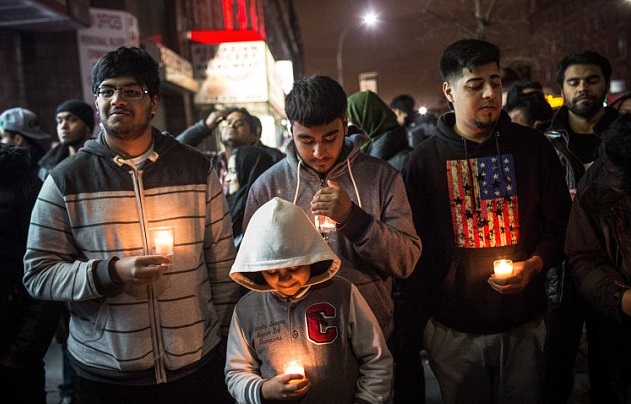
On 16 December, the Tehrik-i-Taliban Pakistan (TTP) attacked the Army Public School in Peshawar, Pakistan, killing 145 people including 132 school children. While any act of terrorism or violence is nothing but condemnable – and Pakistan too has endured many – this attack in particular was especially gruesome and appalling, and more importantly, it shook the whole nation, civilians, the politicians, and the army alike.
Why? Because, the attack was carried out on children less than eighteen years of age, in an Army school close to areas the Pakistan army has been carrying out Operation Zarb-e-Azb to flush out Taliban militants. It was a dark day not just for Pakistan, but also for humanity. The country, whose leadership has been constantly accused of perpetrating terrorism and violent radicalism, was hit where it hurt most. Its children: its innocence, its future, and the torchbearers of its existence.
As condemnations and condolences began pouring in from across the globe, there was a moment of hope for the South Asian region, when the grieving Pakistani citizens began receiving condolences from an unexpected quarter.
Indians had taken to Twitter to express their condolences and condemnations to their counterparts across the border. The Tweets were marked with the #IndiaWithPakistan hashtag. Never before was there such outpouring of grief, sympathy, empathy, and a need to reach out so openly demonstrated by the people of India to the people of Pakistan. It was unprecedented, not only because of the complex and rocky history of the relationship between the two nations, but interestingly, also because until a few days prior, people on both sides were exchanging terse and anguished messages on the Internet over the ceasefire violations on the Line of Control that killed Indian soldiers.
Several of those tweets spoke about how terrorism affects not just Indians but also Pakistanis. There was a demonstration of some level of maturity among the Indian ‘Tweeple’ that the difficult relationship India and Pakistan share as countries had a scope to become comparatively less tense. It demonstrated that in the time of human tragedy, the people on either side felt the obligation to extend basic courtesies at the least. Most of all, this took place despite some serious efforts by some troublemakers who tried to pin the problem on India by unnecessarily factoring in an irrelevant yet powerful memory – 16 December, the date East Pakistan seceded and became an independent country of Bangladesh, in 1971.
However, things took a U-turn when news broke out that Zaki-ur-Rehman Lakhvi, accused of being one of the conspirators of the 26/11 attacks on Mumbai, India, in 2008 – who was under trial in Pakistan – was granted bail on 18 December – two days after the attack on the Peshawar school.
Unsurprisingly, this infuriated a large chunk of Indians, who felt their goodwill gestures had been immensely betrayed. Many on Twitter started questioning the whole sentiment of expressing solidarity towards Pakistani citizens for the loss they suffered in Peshawar. However, this was not a moment the Pakistani civil society was going to let escalate. Still reeling and in shock over the Peshawar attack, they too were especially aghast at the bail order.
In a Tolkienian parallel, this was their “…and Rohan will answer!” moment. The Pakistani civil society expressed resounding solidarity for Indians on Twitter, and the hashtag, #PakWithIndiaNoToLakhviBail began trending.
This was one of those moments when both sides were on the same page and they demonstrated it, regardless of the stances their governments had taken. The Peshawar attacks had already infuriated the Pakistani people to the extent that more people joined in the demands for stricter and more genuine and sincere action against the terrorists by their government. Robust debates and discourses on national security and the future of the country began on various platforms. Several people began questioning the role of those Mullahs who have been proven to have extremist connections and who have yet not been prosecuted. Questions about the rationale of segregating Taliban as good and bad, while already ongoing, intensified.
Lakhvi was eventually retained in government custody, but every now and then, there are reports that the government will release him on bail – causing outrage from the Indian government, which eventually resulted in him being retained in custody again. Even as this cat-and-mouse chase continues, Pakistani citizens have upped their ante, and protests have erupted all over the country, especially at Lal Masjid in Islamabad. On 3 January, 2015, the Pakistani government itself challenged the Islamabad Anti-Terrorism Court’s decision to grant bail to Lakhvi at the Islamabad High Court.
This is the moment people from both sides must seize, and turn the bilateral relations around. Some efforts have already begun. Platforms such as Friendships Across Borders, where people from both sides exchange notes and messages on a public forum, already exist. These initiatives must be encouraged by civil societies and businesses from both sides. The country doesn’t make the people what they are. It’s the people who make the country what it becomes. As clichéd as it might sound, the more the people engage with each other – in whatever format – the simpler policy formulation and implementation becomes. Already, Pakistani TV shows are a huge hit in India. Indian cinema is popular in Pakistan. At this stage, it wouldn’t be too difficult for both countries to begin engaging via the same quarter that brought the two together, albeit for a brief while: the children.
Making the children of both sides participating in exchanges – in schools and colleges for one year periods – would tremendously help understand each other better, and transform the way we shape the way future leaders engage with each other.
Note: Views expressed are the author’s own and do not necessarily reflect the views of the organizations to which she is affiliated.
***